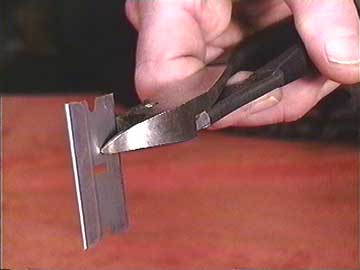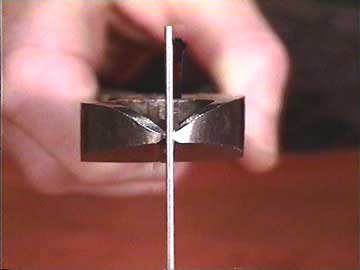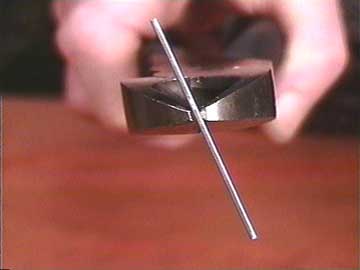Here's the other reason some work better than others: The jaws may not meet precisely, which was why my Snap-On cutters found it increasingly difficult to cut skinny steel strings.
I figured out a cute little trick for picking out the best pair among those on display at my local hardware store.
I take a single edge razor blade along when I'm shopping for new string cutting dikes. When I'm interviewing a candidate, I'll grip the blade with the cutters (lightly!) like this:

If the jaws meet perfectly, the razor blad will stand straight up:

Sometimes the blade snaps to an angle like this, or worse:

These cutters will have difficulty with those thin .008 octave G strings on a 12-string guitar. I'm surprised how much variation I find in the rack of otherwise identical cutters!
Back to Index Page